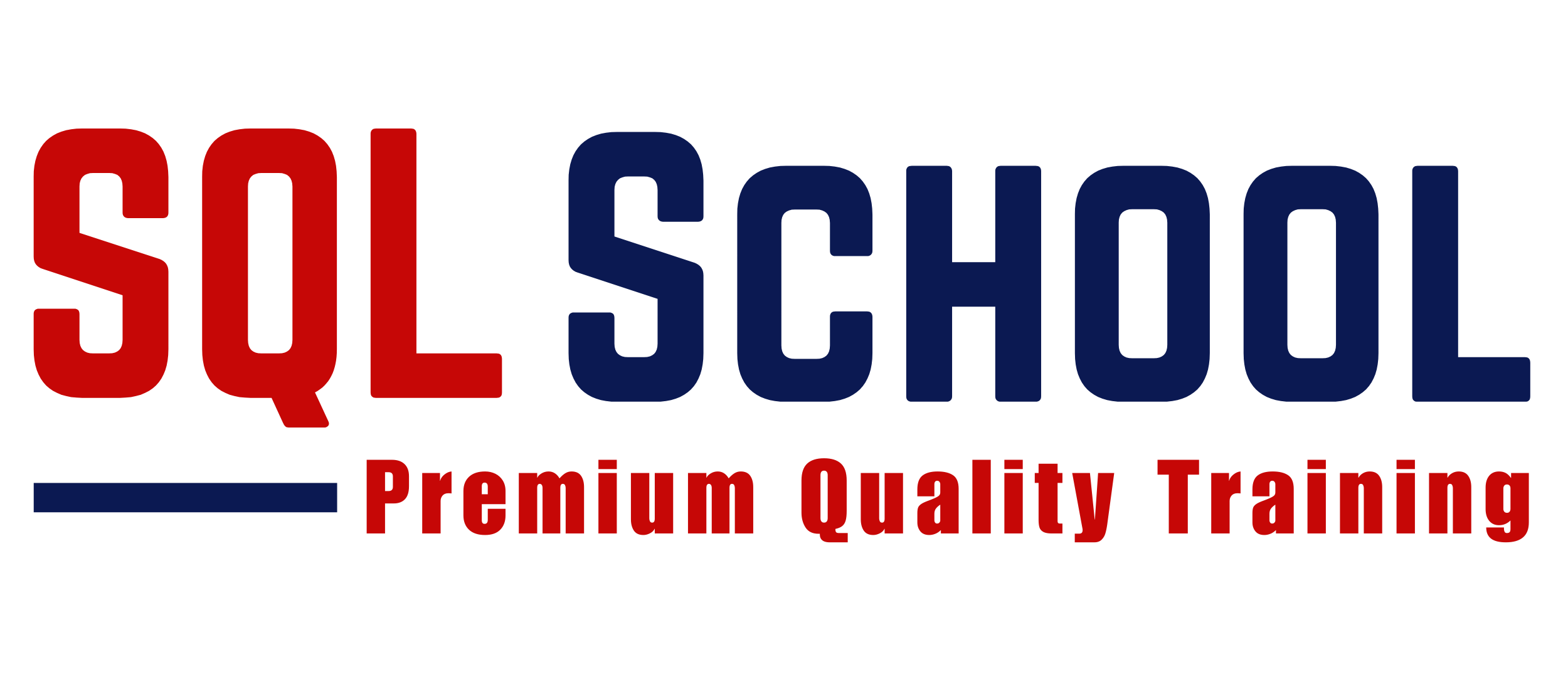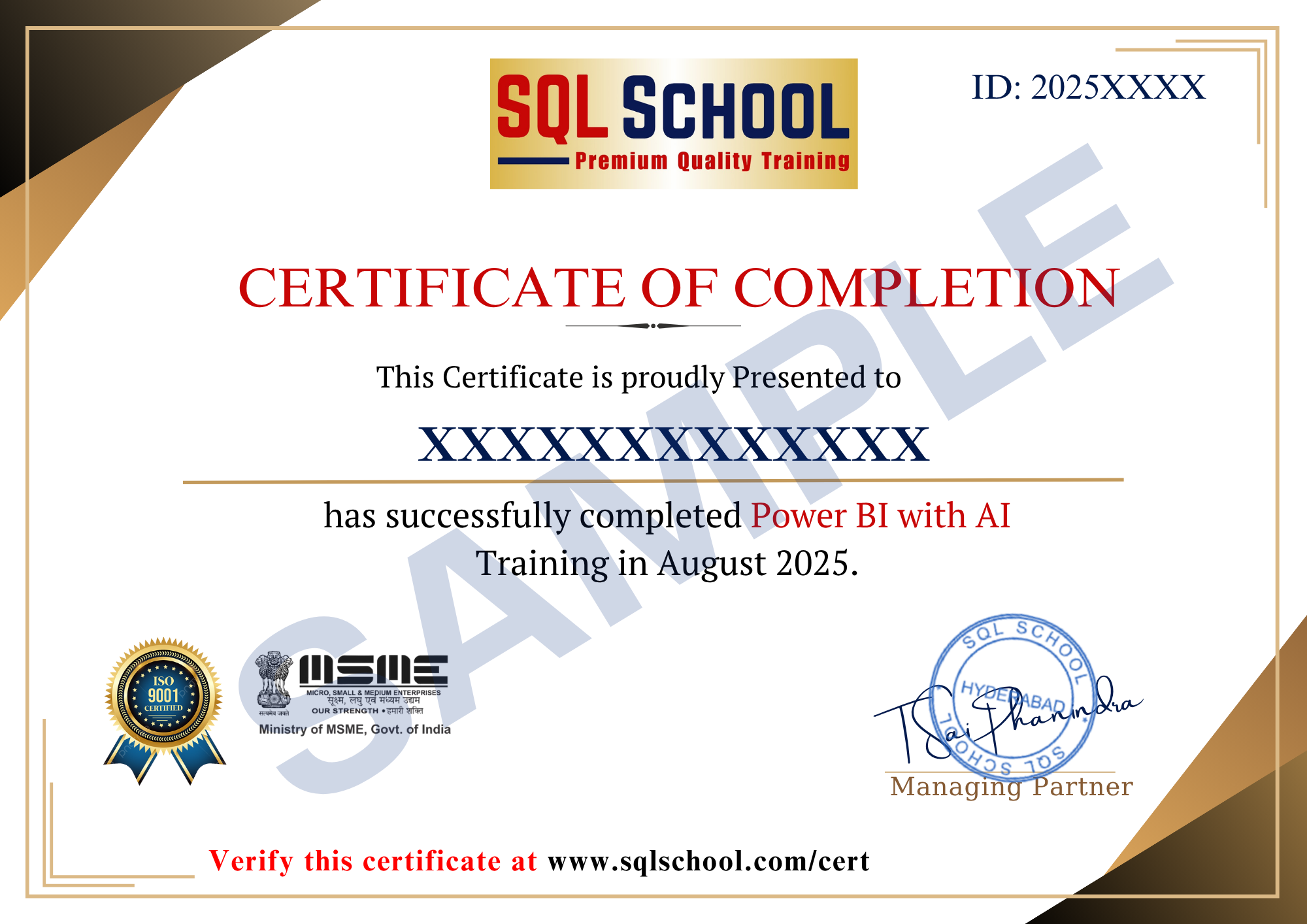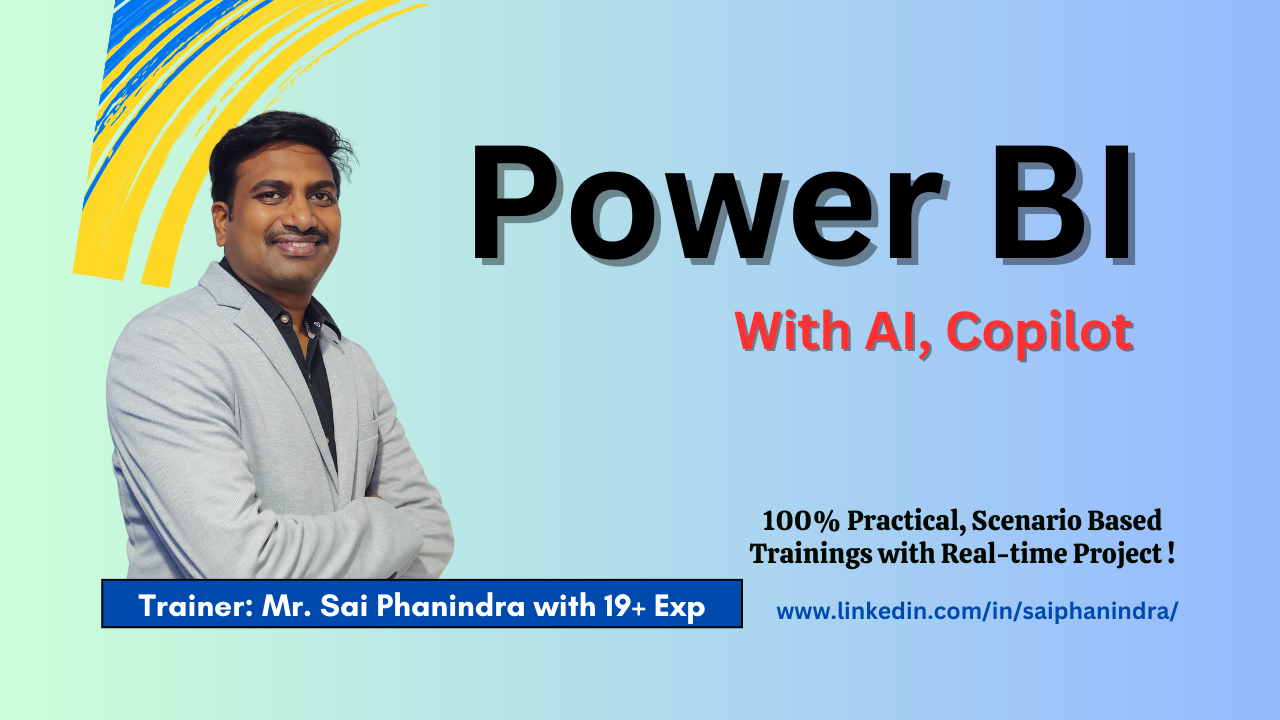Power BI is an awesome, colourful technology that can help us to understand the data, get the actual insights and report / showcase to the customers with ease. Using Power BI, we can design interactive visualizations, dashboards, apps and more. Using AI & CoPilot Integrations, we can take Power BI to next level with eye catchy reports and improve customer engagement. Our Power BI with AI Training course from SQL School is carefully designed to give you step by step concepts with job orientation on complete Power BI Eco System with:
✅ Power BI Co-pilot & AI Integration
✅ Natural Language Queries (Q&A)
✅ AI Visuals & Smart Narratives
✅ R & Python with Power BI
✅ Real-Time Data with AI Insights
✅ Row-Level Security with AI
✅ Deployment with Fabric/Azure AI
✅ PL 300 & DP 600 Exam Guidance
✅ Real Time Project
✅ 1:1 Mentorship, Resume

















